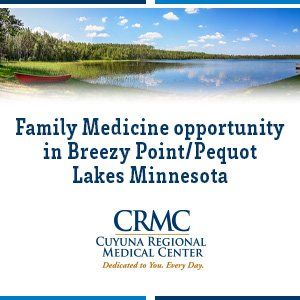uring a presentation to a not-for-profit community health system all-boards retreat, I asked the following question of the system CFO: “What do you need as a profit margin from commercial third party payers to compensate for losses on uncompensated care, and reimbursements from governmental payers.” I didn’t ambush him: he was prepared with the answer, “from 38-43%”. There was an audible gasp by one of the board participants, who happened to be a senior executive from a large publicly traded company. He followed with: “There it is, another hidden healthcare tax.
cover story one
Mission Management
Connecting hospital trustees and physicians
By Daniel K. Zismer, PhD
What’s the point here, how is this related to the topic of “mission management” and why does it matter? The point is so long as community health systems require this level of profitability from commercial payers, they will operate under the risk of these payers exerting downward pressures on utilization and price, leaving them vulnerable to the costs of their defined mission responsibilities. But what can governing boards do? After all, aren’t community hospitals required to provide needed services to all, regardless of ability to pay? The answer to the question is all community health care trustees have a fiduciary duty to oversee the mission strategies of the organization they govern as one component of an overall, integrated financial and strategic plan. One key side note: the misunderstanding of the term “fiduciary”. Too often trustees see the term as one having to do with “finances,” and while that assumption is partially right, a “fiduciary” is one entrusted with the welfare of another - a real person or organization. The responsibilities, and accountabilities extend to and beyond aspects of the financial. As such, trustees’ duties as fiduciaries extend to and through the financial into mission management of the organization, along with all related oversight of how non-trustee leadership manages the organization.
The right mission questions are never independent of the right financial and operational questions.
An Eight Point Framework
What follows is an eight point framework for trustees to apply in fulfilling their fiduciary duties related to mission management. Following the presentation of the framework is a discussion of how competitors are motivated to respond to unmanaged missions by community health systems.
Defining the Mission The term “mission” for community health systems is common parlance in boardrooms. What is often lacking is an accepted definition of how that converts to action together with understandable management performance reporting for a board. On one hand, it can be argued that “all we do is our mission.” On the other, sometimes the traditions of governing boards is that “all we lose money on is our mission.” Trustees need to be clear that “not for profit” designations are a product of tax code regulation. All businesses require sufficient profit performance to remain in business. Generated financial losses on services reimbursed by governmental payers, for example, are not contributions to mission work. The trustee questions here relate to definition of mission, together with the categories of related activities, costs and financing methods, i.e., how mission costs are financed.
Health Care Economics in Highly Competitive Markets Commercial payers have the leverage to exert downward pressures on price and services utilization. When this happens, it can create “excess supply” or loss of provider productivity. Hospitals and all other providers become engaged in market share battles, they scramble to, not always successfully, take market share from competitors.
Competitive market strategies are expensive and often inefficient. Add unmanaged mission strategies to the economic mix, and health system bottom lines can shift to “red ink” status quickly and severely. Digging out from under the pressure with typical responses, such as staff layoffs, adds to the expense burden while leadership attempts to right the ship. The trustee questions here relate to the risks of utilization and price pressures from the most important third party payers, along with understandings of where and how they are likely to exert these pressures, specifically the programs that generate required profits for the organization. Most community health systems make most of their profits from a handful of clinical services. Trustees need to know what’s on this list.
Managing Clinical Service Line Portfolios All community health systems operate from business models composed from portfolios of numerous clinical service lines and programs. Each produces a different economic performance signature, meaning the financial performance of each varies. Not all clinical service lines are profitable. Some necessarily operate at losses, such as surgical specialties supporting expensive primary care strategies. The key to financial success, overall, is dependent upon “portfolio balance”, the more profitable service lines balance out the losses produced by the lesser performers. It is easy to lose sight of the financial interdependence of the services that compose the whole. When overall system financial performance turns negative, the sorting of what goes and what stays is complex. Trustees are not often involved in such decisions due to a lack of expertise and experience. But this lacking is not justification for not asking the right questions, including how portfolio management implicates not only financial performance, but mission performance as well. Mission strategies that rely upon funding from a few highly profitable clinical programs put organizations at risk for precipitous shocks to the revenue and expense structures of the “ profit makers.” The key trustee questions here relate to breakdowns of “ bottom line” performance of the organization, such as “ which programs contribute most to the profitability of the organization.”
Capital Assets and Ambulatory Care Strategies For many smaller to mid-sized community health systems, the majority of their operating revenues derive from ambulatory services. The trend to ambulatory services delivery is expected to accelerate. Many community health systems are locked into an aging and inefficient capital asset structure which may still be functional, but is less than optimally productive when applied to productivity and efficiency demands of modernized ambulatory care environments. The challenge is the cost related to the required transition, especially when health systems are burdened with debt and expensive mission strategies. The key trustee question relates to how the existing capital asset structure lends to demands for competitive ambulatory care strategies.
Competition or Collaboration Referring back to the comment about “competitive inefficiency”; in many community health systems, affiliated physicians are also active competitors with the independent hospital medical staff. Independent physician providers affiliated with community hospitals have a right to act in their own best interest, even if in competition with a community hospital where they hold medical staff affiliation rights and clinical privileges. Risks related to inefficient competition increase when community hospitals are forced to compete with affiliated independent physicians, especially in such services as ambulatory surgery, imaging centers physical therapy programming, infusion therapies centers and in-office procedures services. The facts are that these services will likely be delivered at a fraction of the cost as compared with hospitals providing the same services. . Third party payers naturally move to lower cost opportunities for health plan enrollees. Community health systems and leadership teams may chide independent physicians for their “disloyalty,”, but these providers operate private businesses. They are not in the business of committing to self-stylized community health care missions. They are in the business of practicing a profession profitably. Their business models facilitate a lower cost service with quality and patient satisfaction held to high standards. The trustee questions here relate to where the organization is at risk for competitive physician strategies and whether the health system competes or collaborates.
No merger results in automatic financial performance improvement.
Mergers Solve All Problems? A common, but mostly misled, assumption is community health system mergers automatically lead to improved economies and localized financial performance. The key operative term in this assumption is “automatically”. No merger results in automatic financial performance improvement. Those who lead the merger need to achieve operating economies based upon expense reductions, primarily staff reductions somewhere in the merged system. Promises made by the larger party in the merger (typically referred to in transaction management as the “acquirer”) often include “nothing will change after the transaction is closed”, and “local governance and management will continue to control the community health system”. Such promises are either lies or are simply naïve. Whether referred to as “mergers”, “combinations”, or “acquisitions”, improved financial performance improvement is never automatic. The trustee questions here relate to the post-transaction plan of the party in the driver’s seat; the acquirer.
Competing with Private Equity Historically, health systems didn’t concern themselves with independent physicians as competitors because of perceived inabilities to raise adequate capital. Over the last few years, private equity players have entered many geographic and specialty markets with cash to buy physician practices, specifically those capable of acquiring the same higher-margin services as those coveted by health systems. Private equity-backed service ventures aggressively pursue targeted niche business strategies. Their missions are not the same as community health systems. Alternatively, independent physician groups that aggregate to form partnerships focused on the more profitable clinical service lines— outpatient surgery, imaging, rehab services and multi-specialty clinic services facilities— are designed with the ability to access affordable bank financings to fund competitive ventures. Here again, the mission strategies usually differ from community health systems. Such ventures are often attractive to commercial payers due to their ability to under-price community hospitals. The trustee questions here relate to leadership’s assessment of the risk profile for such competitive strategies, including alternatives to straight-up competition.
Investments in Population Health An increasing number of community health systems are investing in “population health strategies” as part of their mission. Population health strategies typically focus on such initiatives as health status improvement, as well as primary and secondary disease prevention efforts for the general population and for specific population cohorts at risk; both adult and pediatric. While the mission goals are laudable, most community health systems are ill-equipped to be in the population health business, including how to make programmatic investments that will pay off financially. Trustee questions here relate to the organization’s internal competencies, capabilities and specialized operating systems requirements to be in the business, to a point where a sufficient financial return is accessible.
Responding to Unmanaged Missions
Trustees of not-for-profit community health systems are often reticent to probe deeply into the “mission questions” at board meetings for fear of being ostracized and labeled as one who “only cares about money.” Unmanaged missions have brought down more than one community hospital.
In a personal and hopefully instructive vignette, I had the unpleasant job of telling a community health system local board they no longer had the financial where-with-all to continue going it alone. The board chair responded with “well we fought the good fight for the sake of the community,” and to an extent he was right, they did try. However, with hindsight, it was obvious that the red lights had been flashing for some time. “Mission” was top of mind, mission management wasn’t.
The right mission questions are never independent of the right financial and operational questions, when posed by community health system trustees. If trustees don’t ask them, assume no one else will. Mission management is as important as every other aspect of organizational management. Mission management is complex and is interwoven with the tapestry of all of organizational governance and management.
Here is a finer point to put on the mission and physician business strategies cited above. Trustees will often assume that all independent physicians work to advance the mission of the community hospital where they hold a medical staff affiliation. To be sure, independent physicians can certainly appreciate and share in efforts to advance the mission of health systems where they spend a portion of their professional life. Trustees should not, however, assume or confuse the mission responsibilities of physicians in independent practice. They have first, and foremost, a fiduciary responsibility to their own organizations. When they exercise their duties in this regard, and the results are deemed by health system boards and leadership teams to be opportunistic, or even disloyal, trustees should step back and objectively assess the motivations at play. Missions of independent practices can certainly intersect with those of community hospitals, but they need not be one and the same.
Community health systems continue to employ physicians, across all specialties, as one key tactic central to a comprehensive organizational strategy. When successfully designed and executed, these multi-specialty provider integration strategies can be a powerful economic “flywheel” for the overall financial and mission strategy. As with the independent physicians, integrated and employed providers can have an affinity for the missions of the community health systems they serve; still they are practitioners of a profession. Organizational missions can certainly live within and through the integrated provider strategies. Integration of providers adds a level of complexity to health system strategies, calling for due education of the trustees/fiduciaries who oversee performance of the whole, mission included.
Finally, a principal question to be asked by trustees, relative to the risk of mission strategies and related costs, is: “how could our competitors use our mission to their advantage?” More specifically, “how could competitors, whether local, regional or national, exploit our more profitable clinical service lines, the ones that fund our mission?” This question typically generates rich discussions in the board room.
Daniel K. Zismer, PhD, is professor emeritus, endowed scholar, and chair, School of Public Health, University of Minnesota. He is also co-chair and CEO, Associated Physician Partners, LLC and the co-founder of Castling Partners. dzismer@appmso.com.
MORE STORIES IN THIS ISSUE
cover story one
Mission Management: Connecting hospital trustees and physicians
By Daniel K. Zismer, PhD
cover story two
Generation Now Nursing: Redefining the value proposition




















